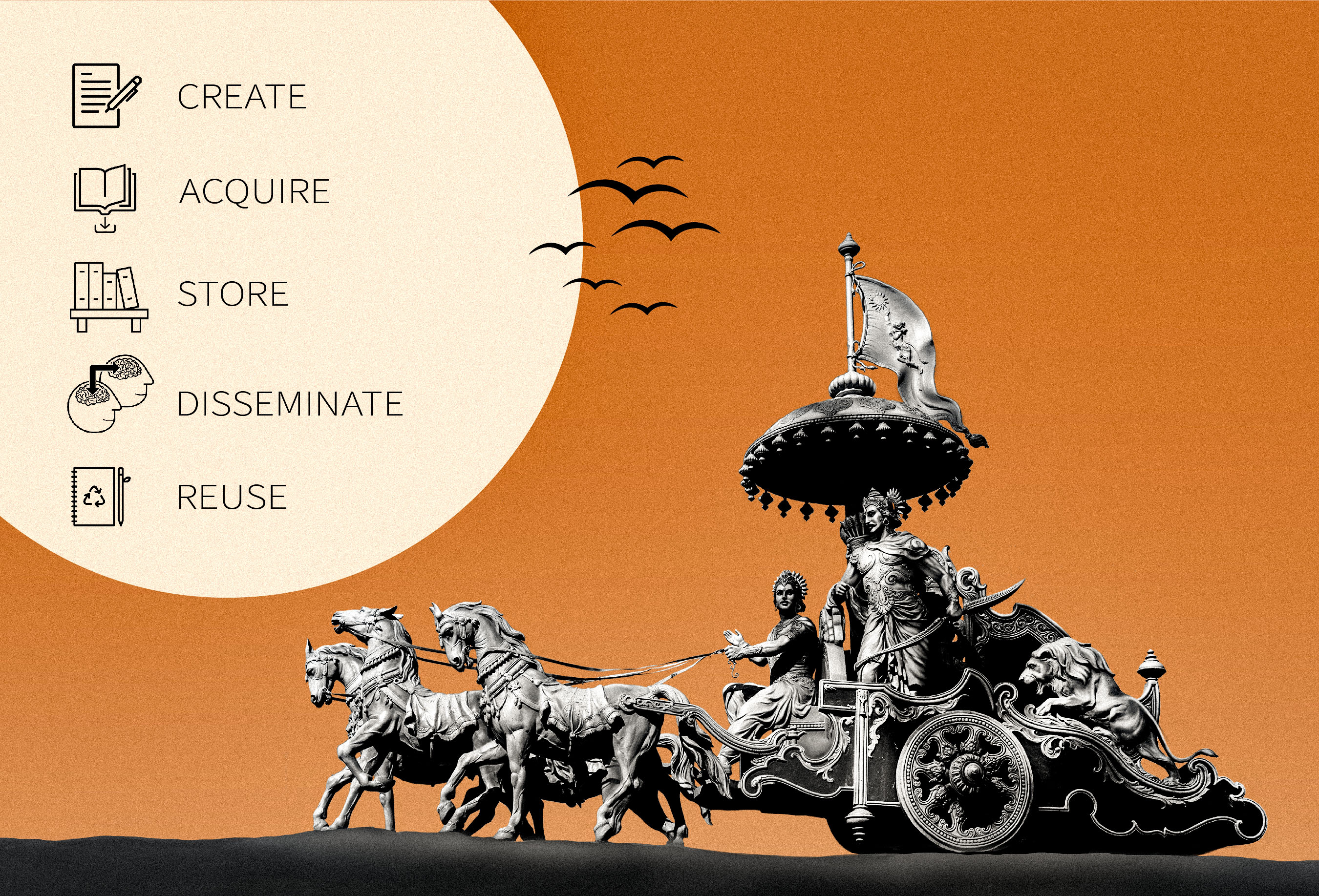Knowledge Management: An Introduction
On the first day of the 18-day battle in the Mahabharata at Kurukshetra, Arjuna, overwhelmed with guilt, lays down his armour and refuses to fight his brethren. Seeing Arjuna swept with pity, his mind grief-stricken, and his eyes full of tears, Krishna stands up in all his glory to share divine knowledge and to remind the prince of his social responsibility as a warrior to fight to uphold righteousness. He imparts the value of Jnana Yoga (Yoga of Knowledge) in pursuing material and divine excellence. Jnana Yoga underlines the significance of true knowledge, its creation, management, application and benefits to scale greater heights of self-realisation.
In today's world, knowledge forms the core of global development. It is a vital resource for organisations to work and collaborate successfully as well as for communities, cities, nations and regions to create wealth, quality of living, peace and sustainability. It is central to any innovation and learning processes within firms and organisations. The process of creating, acquiring, storing, disseminating and reusing knowledge is termed Knowledge Management (KM). This function acts as a key element for achieving impact by harnessing the organisation's collective knowledge, leading to better operational efficiencies and cooperation. Organisations with a KM strategy achieve outcomes more quickly as increased organisational learning and collaboration among team members facilitate faster decision-making across different functions. It also streamlines organisational processes, such as training and onboarding, leading to higher employee satisfaction and retention.
In this 2 part series, I will share my understanding of the fundamental concepts of KM and factors that organisations can consider when crafting their own KM strategy. This first post introduces the general concepts underlying KM and associated processes.
Types of Knowledge
New knowledge always begins with the individual, be it a researcher’s idea, a bureaucrat’s intuitive sense of process improvement in the government procurement system or an Auxiliary Nursing Midwife’s (ANM) years of experience in identifying early symptoms of stunting.
In each of these cases, an individual's personal knowledge becomes the organisation’s knowledge. This takes place continuously at levels of the organisation. This type of knowledge is called tacit knowledge. It is highly personal, hard to formalize and difficult to communicate.
On the other end of this spectrum is explicit knowledge. This type of knowledge can be captured easily in the form of documents, databases, computer programmes, product specifications etc.. The tangible nature of this form of knowledge helps in retaining the intellectual capital of an organisation and supports knowledge transfer to new members.
Knowledge Management processes
Managing knowledge at an organisational level requires putting in place several processes, these are described as follows:
Knowledge Creation
In this stage, sources (documents, artefacts etc) of existing knowledge within or outside the organisation are identified. Further, avenues of creating new knowledge are explored.
Knowledge Organisation
During this stage, existing knowledge products are classified and hosted on technology platforms such as databases. Knowledge products are classified in alignment with the requirements of the type of repository in which they are stored.
Knowledge Sharing
In this last level, procedures for knowledge sharing are widely shared throughout the organisation. This is done through physical and virtual workshops, explainer videos and documentation.
Being able to classify knowledge, and establish processes for its organisation and sharing are foundational elements of an organisation’s KM strategy. Over time such knowledge systems and processes of the organisation mature and translate into a defined competitive advantage for the organisation.
In the next post of this series, we will dive deeper into frameworks that may be used to craft the knowledge management strategy of an organisation. Specifically, we examine other dimensions of an organisation such as people, technology and culture that need to be mobilised to implement and sustain some of the processes mentioned above. While different organisations will have their own unique needs when it comes to capturing and utilising knowledge, we hope to highlight certain fundamental principles that enable organisations to build their own knowledge management systems.



Add new comment